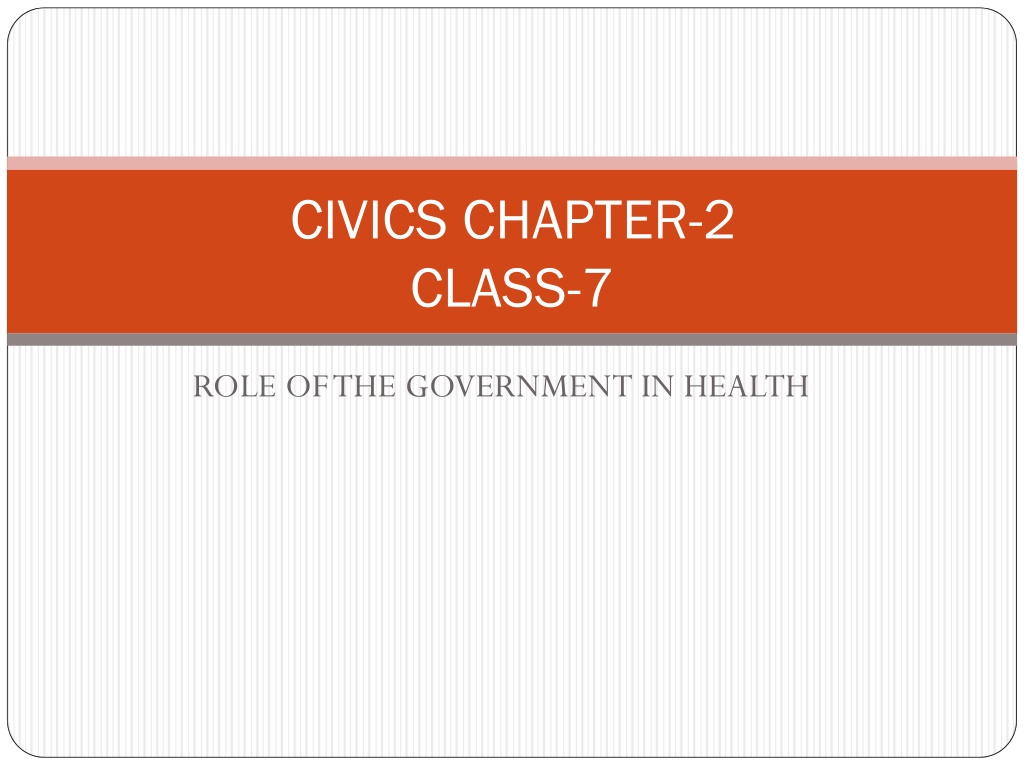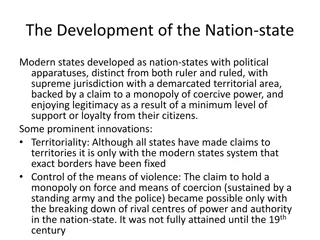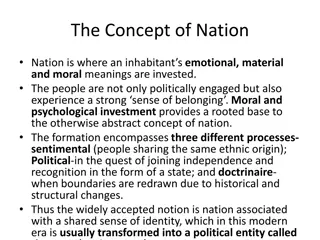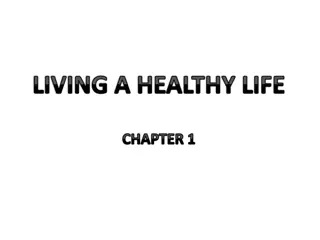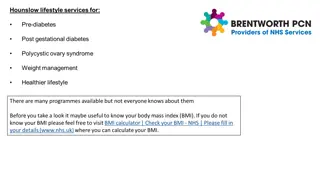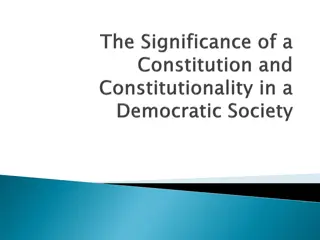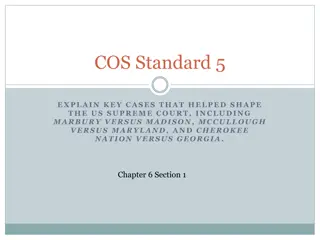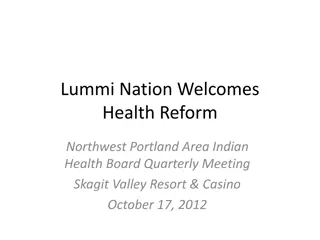Understanding the Role of Government in Health for a Healthy Nation
In a democracy, the government's responsibility includes ensuring the well-being of its citizens by providing essential services like healthcare. Despite advancements in medical sciences, India faces challenges in delivering adequate healthcare facilities to its people. The public health service, comprising health centers and hospitals, plays a crucial role in addressing various health issues, from common illnesses to specialized care. Improving access to quality healthcare remains a key priority for a healthier society.
Download Presentation

Please find below an Image/Link to download the presentation.
The content on the website is provided AS IS for your information and personal use only. It may not be sold, licensed, or shared on other websites without obtaining consent from the author. Download presentation by click this link. If you encounter any issues during the download, it is possible that the publisher has removed the file from their server.
E N D
Presentation Transcript
CIVICS CHAPTER-2 CLASS-7 ROLE OF THE GOVERNMENT IN HEALTH
INTRODUCTION In a democracy people expect the government to work for their welfare.This could be through the provision of education, health, employment, housing or the development of roads, electricity etc. In this chapter we shall examine the meanings and problems related to health.
What is health? Health means our ability to remain free of illness and injuries. But health isn t only about disease. Apart from disease, we need to think of other factors that affect our health. For example, if people get clean drinking water or a pollution free environment they are likely to be healthy. On the other hand, if people do not get adequate food to eat or have to live in cramped conditions, they will be prone to illness. It isn t healthy to be dull, inactive, anxious or scared for long stretches of time.We all need to be without mental strain.
Healthcare in India There has been a phenomenal advancement in medical sciences. However, the second column points out how poor the health situation in our country is. With all the above positive developments we are not able to provide proper healthcare facilities to people. This is the paradox something that is contrary to what we would expect.
Healthcare in India In order to prevent and treat illnesses we need appropriate healthcare facilities such as health centres, hospitals, laboratories for testing, ambulance services, blood banks, etc., that can provide the required care and services that patients need. Our country has the money, knowledgeand people with experience but cannot make the necessary healthcare available to all
Healthcare Services in India Public Healthcare Private Healthcare
Public health services The public health service is a chain of health centres and hospitals run by the government. They are linked together so that they cover both rural and urban areas and can also provide treatment to all kinds of problems from common illnesses to special services. At the village level there are health centres where there is usually a nurse and a village health worker. They are trained in dealing with common illnesses and work under the supervision of doctors at the Primary Health Centre (PHC).
Public health services The health service is called public for many reasons. In order to fulfil its commitment of providing healthcare to all citizens, the government has established these hospitals and health centres. The resources needed to run these services are obtained from the money that we, the public, pay to the government as taxes. Hence, such facilities are meant for everyone. One of the most important aspects of the public health system is that it is meant to provide quality healthcare services either free or at a low cost, so that even the poor can seek treatment.
Private health facilities There is a wide range of private health facilities that exist in our country. A large number of doctors run their own private clinics. In the rural areas, one finds Registered Medical Practitioners (RMPs). Urban areas have large number of doctors, many of them providing specialised services. There are hospitals and nursing homes that are privately owned. Thereare many laboratories that do tests and offer special facilities such as X-ray, ultrasound, etc. There are also shops from where we buy medicine.
Private health facilities Today the presence of private facilities can be seen all around. In fact now there are large companies that run hospitals and some are engaged in manufacturing and selling medicines. As the name suggests, private health facilities are not owned or controlled by the government. Unlike the public health services, in private facilities,patients have to pay a lot of money for every service that they use.
Healthcare and equality: Is adequate healthcare available to all? In India, we face a situation where private services are increasing but public services are not. What is then available to people are mainly private services. These are concentrated in urban areas. As theseservices are run for profit, the cost of these services is rather high. Medicines are expensive. Many peoplecannot afford them or have to borrow money when there is an illness in the family. For those who are poor, every illness in the family is a cause of great anxiety and distress.
Healthcare and equality: Is adequate healthcare available to all? Those who are poor are in the first place undernourished. These families are not eating as much as they should. They are not provided basic necessities like drinking water, adequate housing,clean surroundings, etc. Sometimes it is not only the lack of money that prevents people from getting proper medical treatment. Women, for example, are not taken to a doctor in a prompt manner. Many tribal areas have few health centres and they do not run properly.Even private health services are not available.
What can be done? There is little doubt that the health situation of most people in our country is not good. It is the responsibility of the government to provide quality healthcare services to all its citizens, especially the poor and the disadvantaged. However, health is as much dependent on basic amenities and socialconditions of the people, as it is on healthcare services. Hence, it is important to work on both inorder to improve the health situation of our people.And this can be done.
The Kerala experience In 1996, the Kerala government made some majorchanges in the state. Forty per cent of the entire statebudget was given to panchayats. They could plan and provide for their requirements. This made it possible for a village to make sure that proper planning was done for water, food, women s development and education. This meant that watersupply schemes were checked, the working of schools and anganwadis was ensured and specific problems of the village were taken up.
The Costa Rican approach Costa Rica is considered to be one of the healthiest countries in South America. The main reason forthis can be found in the Costa Rican Constitution.Several years ago, Costa Rica took a very importantdecision and decided not to have an army. This helped the Costa Rican government to spend the money that the army would have used, on health,education and other basic needs of the people. TheCosta Rican government believes that a country has to be healthy for its development and pays a lot of attention to the health of its people.
